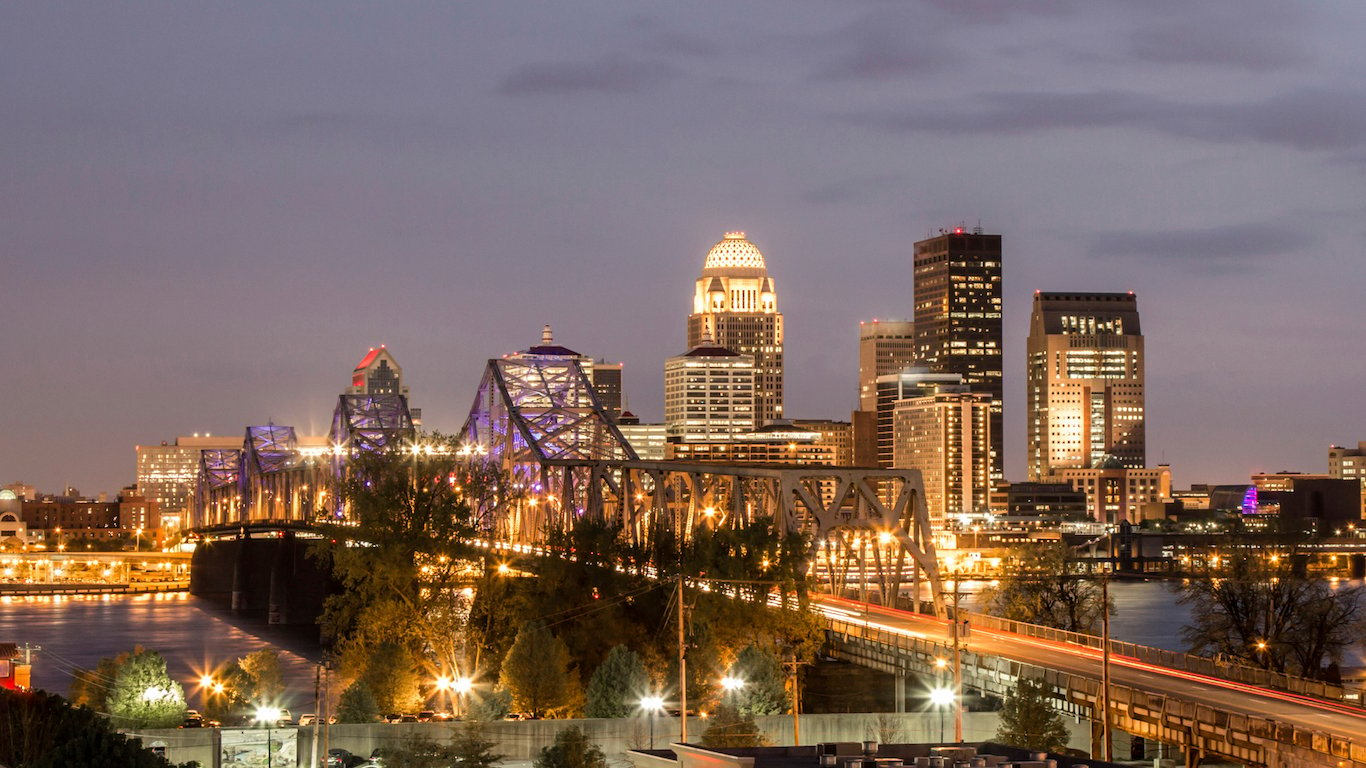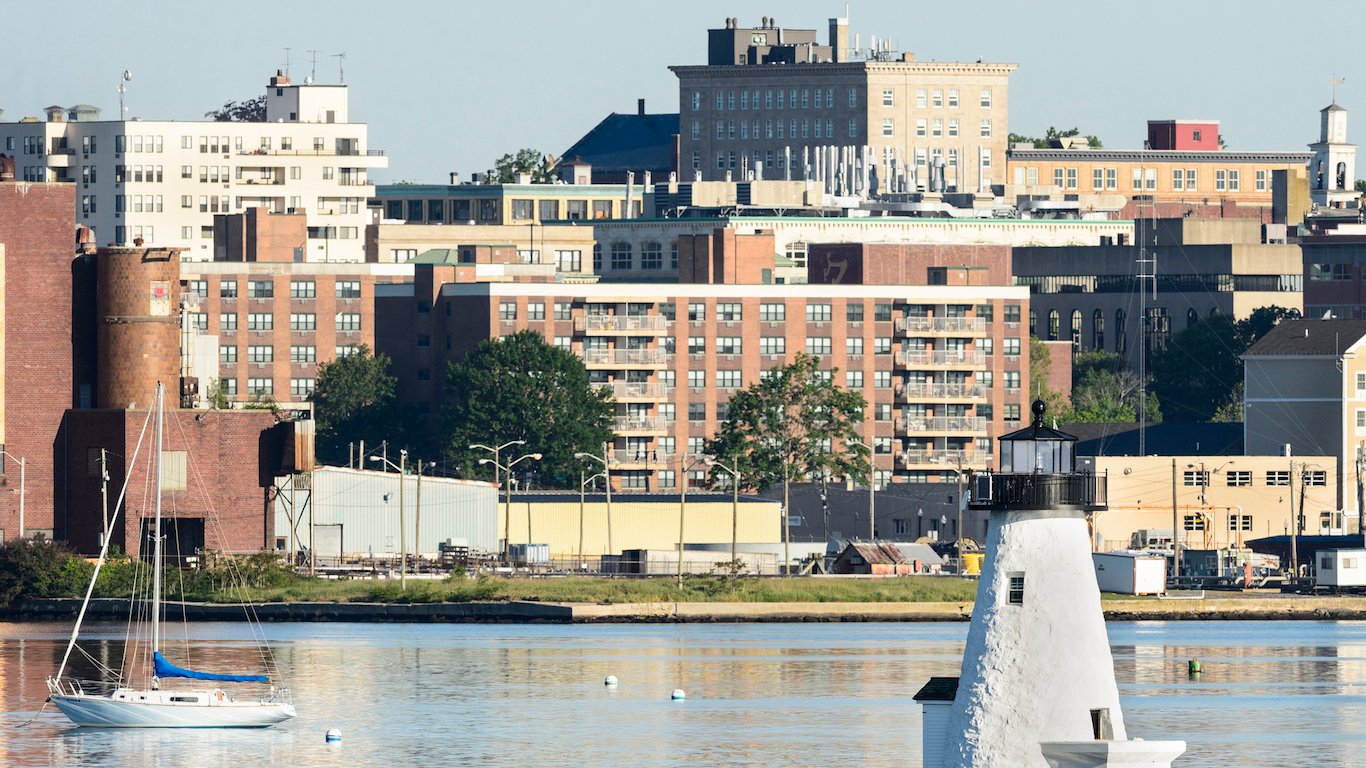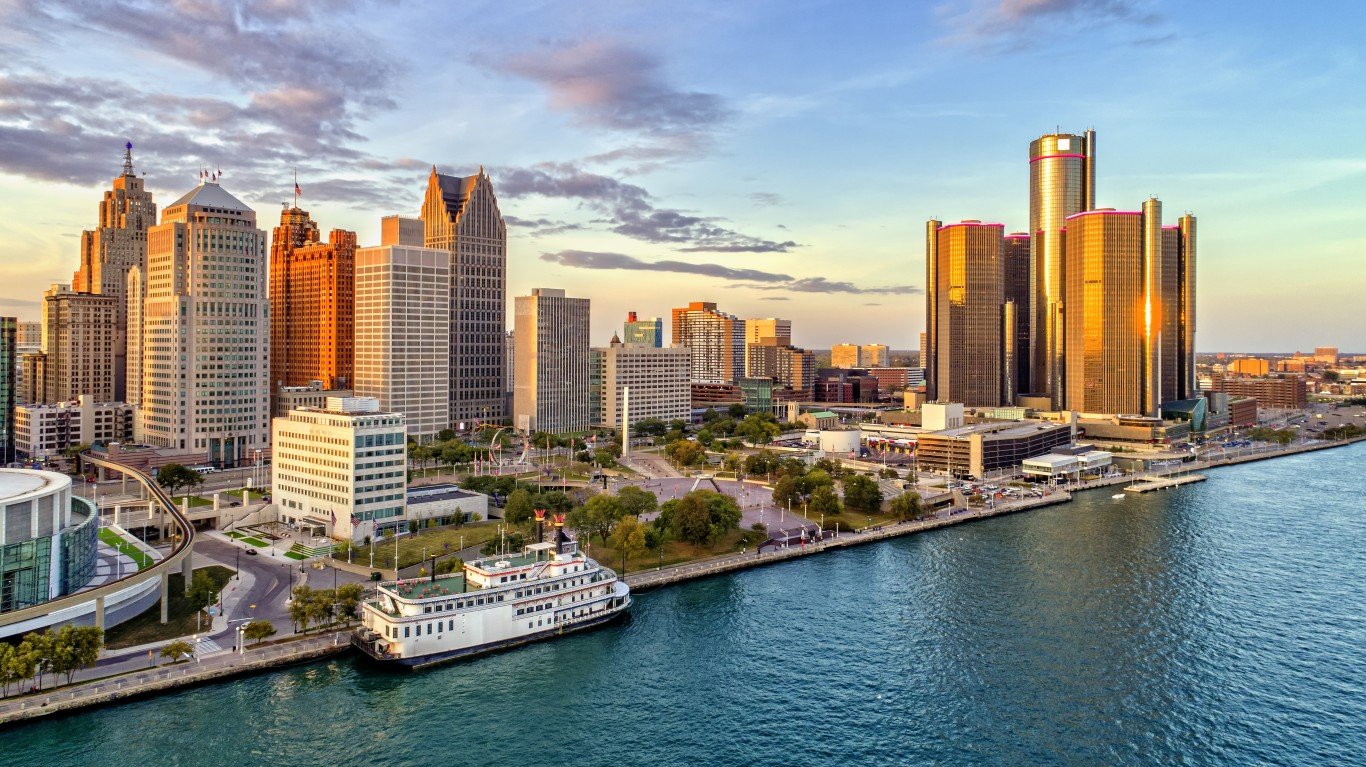These Cities Have Unlikely Success Stories
November 1, 2018 by Mike SauterFor decades, large and mid-sized cities across the United States have struggled with declining populations and vanishing jobs. This has occurred as major employers have moved overseas or have wholly ceased operations as the need for heavy industry in the United States ebbs.
Many of the more well-known of these cities can be found in the Northeast and Midwest, and are often collectively referred to as “Rust Belt” cities. Scholars often call these cities by another name: legacy cities. Many of these places are well-known to Americans as symbols of national post-industrial decline: St. Louis, Minneapolis, Cleveland, Buffalo, and others.
[in-text-ad]
These places were once major industrial centers, hubs of innovation, and home to thriving populations. Beginning in the middle of the 20th century, those cities began to lose jobs, urban decay set in, and residents moved to the suburbs or out of the region entirely. In these cities, populations declined by at least 20% from their peak to today, in some cases by over half.
Click here to see the cities that have unlikely success stories.
These cities face a range of challenges that make any true economic recovery particularly difficult. And it is a steep hill to climb. These cities have to overcome issues such as long-term population loss, infrastructure decay, crime, poverty, and other socioeconomic problems to achieve recovery, let alone prosperity.
The subprime mortgage crisis affected most major American cities in some way. In many, rapid housing development and growth came to a screeching halt as the housing bubble burst. Cities like Phoenix and Las Vegas underwent sudden rapid spikes in unemployment as the booming construction industry vanished effectively overnight.
Other cities, including the legacy cities, also struggled, although there was no meaningful growth to stall. Rather, the national recession served to put greater pressure on already weak economies, putting even more people out of work and exacerbating the issues these legacy cities had struggled with for decades.
When the recovery and economic boom came, Phoenix and Las Vegas returned to relative prosperity, with skyrocketing job growth and declining unemployment. For other legacy cities, the recovery only did so much. Legacy metropolitan areas like Toledo, Ohio; Flint, Michigan; and Erie, Pennsylvania continued to have stagnant job markets and declining labor forces. In Youngstown, Ohio, for example, employment — the number of people who hold a job — declined by 3.1% between 2010 and 2017, even as national employment increased by 10.3% over that period.
As the recent economic boom continues, nearly every legacy metropolitan area exhibits some or all of these issues: unemployment rates remain above the national figure; the number of employed people is either stagnant or declining, and same goes for the labor force; poverty and crime remain very high. Yet, with all these serious obstacles and additional complications caused by the recession, there remain a handful of American legacy cities for which a real glimmer of hope exists. 24/7 Wall St. identified three legacy metropolitan areas where employment has increased and unemployment has declined substantially since 2010. While these cities still have room for improvement, there are a number of signs that these places may truly be defying odds and escaping their status as relics of the past.
Methodology
To identify the cities with unlikely success stories, 24/7 Wall St. reviewed data for a select group of metropolitan areas. For these metropolitan areas, we considered employment data from the Bureau of Labor Statistics’ Local Area Unemployment Statistics program as well as data from the U.S. Census Bureau’s 2017 America Community Survey . These three cities met the following criteria: 2010-2017 employment growth exceeded the national employment growth figure of 10.3%; labor force growth between 2010 and 2017; population growth between 2000 and 2017. Cities were excluded if the 2010 annual unemployment rate fell below the national rate of 9.6% or if the 2017 rate exceeded the national rate of 4.4%. All figures listed are for the metropolitan area, and not merely the city proper.
Only legacy cities were considered in this analysis. Our list of legacy cities is based on a list of 65 places classified in a 2015 report “Mapping America’s Legacy Cities” published by the J. Max Bond Center at the Bernard and Anne Spitzer School of Architecture at the City College of New York. “Initially calculated from 2000 U.S. Census figures … cities now fit the population-based definition of a Legacy City as cities that still have more than 50,000 residents, yet have lost greater than 20 percent of their population since peak populations between 1940 and 1970.“ for our analysis, we only considered metropolitan areas for which the identified legacy city is the primary city.

3. Louisville/Jefferson County, KY-IN
> Employment 2010-2017: +12.2% (564,311 to 633,120)
> 2010 Unemployment: 9.9%
> 2017 Unemployment: 4.1%
> Labor force 2010-2017: +5.4% (626,311 to 660,331)
The unemployment rate in the Louisville metropolitan area, which includes the surrounding Jefferson County, fell from nearly 10% in 2010 to just 4.1% in 2017. As a sign that the city’s low unemployment rate is not just a result of people giving up on looking for work, a recent report by the Kentucky Chamber of Commerce found that Louisville had an employment-to-population ratio of nearly 60%, the highest among the state’s metropolitan areas. Louisville’s poverty rate of 12.2% as of 2017 was lower than the national rate of 13.4%.
[in-text-ad]

2. New Bedford, MA
> Employment 2010-2017: +12.6% (1,387,438 to 1,562,201)
> 2010 Unemployment: 9.7%
> 2017 Unemployment: 3.5%
> Labor force 2010-2017: +5.3% (1,537,187 to 1,618,828)
The southern Massachusetts city of New Bedford has dealt with many of the same long-term issues that larger legacy cities have. The former whaling city’s population declined by over 20% from its peak in the 20th century through 2010. The city lost manufacturing jobs in the city’s historic textile trade, among other areas.
Today, there is hope. The area’s annual unemployment rate of just 3.5% is well below the national unemployment rate of 4.4%. That came after a 6.2 percentage point decline in the unemployment rate from 2010. The city has added 175,000 jobs since 2000.

1. Detroit-Warren-Dearborn, MI
> Employment 2010-2017: +13.8% (1,772,626 to 2,017,560)
> 2010 Unemployment: 13.9%
> 2017 Unemployment: 4.4%
> Labor force 2010-2017: +2.6% (2,058,554 to 2,111,266)
Detroit’s decline has likely been among the most discussed — and most severe — among legacy cities. Between 1950 and 2010, the city’s population fell by 61%, second only to St. Louis among major metropolitan areas. Since 2000, the metro area’s population has increased only slightly, but there are many encouraging signs Detroit is turning a corner. The city’s improving unemployment rate, which once was among the worst in the country, is now at the national average. Employment in the Detroit region has increased by close to 250,000, a 13.8% rise. In 2010, at the height of national unemployment, the metro area’s 13.9% unemployment rate was one of the 20 highest in the country. Its current annual jobless rate of 4.4% is in line with the national rate.
Part of Detroit’s recovery comes from growth in tech sector manufacturing. According to one report by industry publication Select Resources, high-tech jobs in the area have increased by 26% in the past three years. A report by TechCrunch found that 70 companies had been founded in the city from the beginning of 2015 through the summer of 2017.
Take This Retirement Quiz To Get Matched With A Financial Advisor (Sponsored)
Take the quiz below to get matched with a financial advisor today.
Each advisor has been vetted by SmartAsset and is held to a fiduciary standard to act in your best interests.
Here’s how it works:
1. Answer SmartAsset advisor match quiz
2. Review your pre-screened matches at your leisure. Check out the
advisors’ profiles.
3. Speak with advisors at no cost to you. Have an introductory call on the phone or introduction in person and choose whom to work with in the future
Take the retirement quiz right here.